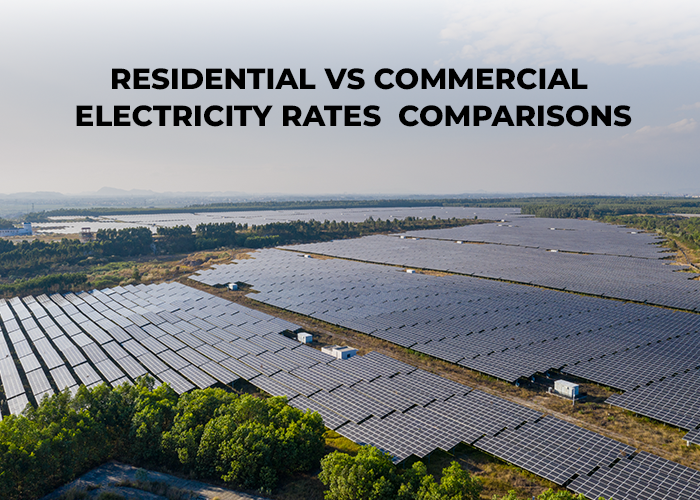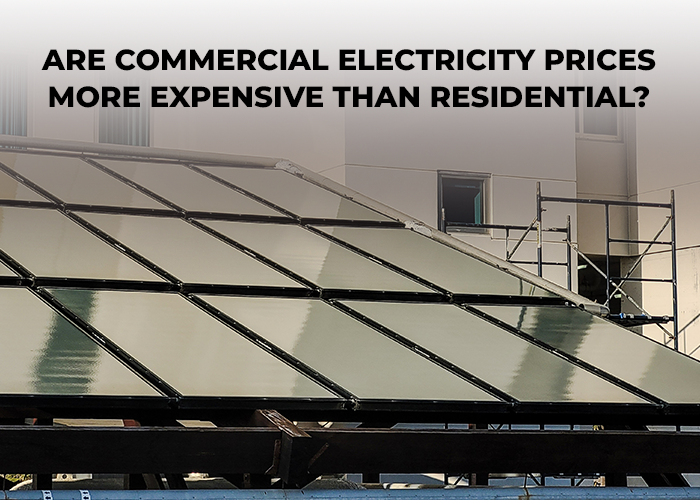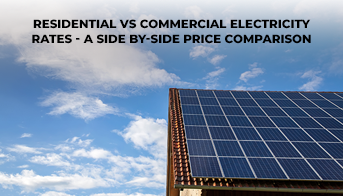Residential Vs Commercial Electricity Rates – A Side By-Side Price Comparison
Are You Tired of Paying High Electric Bills? Electricity rates immensely affect our monthly expenses. Understanding the differences between residential and commercial electricity rates in 2023 may help inform decisions and save money.
In this article, US Energy Discount presents service side-by-side price comparisons between residential vs commercial electricity rates to clarify this critical discussion topic.
Residential Electricity Rates
Residential electricity rates are explicitly designed for houses and apartments. They usually reflect how much power has been consumed through an adjustable tiered system based on usage. Most residential areas will feature one or two such tiers based on consumption levels – for instance:
- Tier 1 (Baseline): This plan offers the lowest electricity rate. They are usually designed to meet basic electricity needs and cover a set amount of Kilowatt-Hours per Month.
- Tier 2 (Midrange): When your electricity consumption surpasses baseline usage, Tier 2 applies, and prices per kWh may increase slightly more.
- Tier 3 (High Usage): When electricity consumption surpasses the midrange tier, higher per kWh charges apply.
TOU rates often have higher prices during peak hours but lower ones during off-peak demand periods to encourage energy conservation during high-demand periods.
The rates for residential electricity vary significantly across the United States. Hawaii has the most expensive residential rate, at 33.49 cents per kWh, possibly because of its location and dependency on imported fuels to generate electricity.
However, Idaho, along with Washington, has the most affordable rate for homes (10.16 as well as 10.11 cents/kWh for each), probably because of the high demand for hydroelectric power, a cheap source of electricity.
Commercial Electricity Rates
Businesses, factories, and other non-residential establishments receive electricity rates tailored to their unique requirements at commercial electricity rates.
While residential rates often feature simplified structures with fixed usage patterns for electricity usage and supply needs. Commercial rates have more complex structures due to higher electricity demand and different usage patterns.
Here are a few key elements commonly seen among these commercial rates.
Demand Charges
Businesses are charged according to their highest electricity usage over any specified time frame. Covering infrastructure and capacity requirements to accommodate peak demands.
Energy Charges
Like residential rates, commercial rates include energy charges based on kilowatt-hour usage.
Power Factor Correction Charges for Commercial Customers
Customers that utilize an inefficient electrical system could incur power factor correction charges to improve its power factor and require extra equipment to increase it.
Commercial electricity rates can differ widely from state to. In addition, Hawaii tops the list with 30.88 cents per kWh commercial rates. Nevada and Virginia provide the lowest commercial rates, at 7.77 or 7.79 cents/kWh, respectively.
Residential Vs Commercial Electricity Rates Comparisons

Base Rates
Due to commercial customers’ higher consumption levels, residential rates typically offer more cost-effective base rates.
Residential rates use a tiered structure based on usage; commercial rates often involve additional variables like demand charges, making their calculation more complex.
Time-of-Use Rates (ToU)
These time-of-use rates are more commonly seen in commercial settings and enable businesses to adjust their energy use to avoid peak demand periods more easily.
Negotiation Power
Commercial customers often enjoy greater negotiating leverage regarding custom rates based on their energy consumption and requirements.
The range of commercial, residential, and industrial rates differs depending on the state. For instance, Alabama has a significant distinction in the residential rate (12.96 cents/kWh) and industrial rates (6.33 cents/kWh).
However, with the District of Columbia, the rates are more comparable (13.09 cents/kWh for residential usage and 13.00 cents/kWh for commercial). This variation could be due to utilities’ different pricing strategies or the different regulation approaches used by the state-level utility commissions.
Pricing Quotes
Business quotes are significantly more complicated than standard quotes to purchase energy. Suppliers must purchase energy in advance to fulfil their business customers’ long-term contracts.
They consider the risks, credit risk, and industry types while considering specific usage patterns, such as the period of the highest demand, which signifies the most expensive cost.
Quotes for domestic and business energy are available online when comparing market sites. However, they are typically not complete, and while they are great for home use, the quotes can change drastically. They are often not in a positive manner when you get past the primary front page of the site.
While some business quotes are rejected, and a more expensive rate is negotiated, others can be improved if you directly contact the energy company.
Business owners need more time to meet with various providers, with the majority relying on the services of an energy broker.
Are Commercial Electricity Prices More Expensive than Residential?

The answer to this question is contingent on many factors, so studying and comprehending what goes into calculating a rate is crucial. We’re aware that the electrical industry can be complicated.
Understanding and reading your electric bill may need to be clarified.
You’ll need to be aware of and know the plan you’re currently using.
If you look at your bills, you could be able to see the following essential elements:
- Information on the previous and the current month
- Current electricity rates
- Utilization of electricity
- Charges
- Amount due
- Date due
These are the basic concepts you can grasp in most cases.
You’ve got your strategy for what you’ll be due when it’s due and how you could save a few dollars next month if your consumption is excessive.
What's the remainder of the legislation?
There are many numbers or charts as well as other information that is sometimes added. Some companies provide charts showing users the week’s temperature. There are tips on how to cut down your usage, and the amount of carbon that was prevented from being released due to renewable energy sources.
Last Thoughts On Residential Vs Commercial Electricity Rates
Navigating the energy costs landscape more successfully begins with understanding the differences between residential and commercial electricity rates.
While residential rates tend to be simpler, commercial rates often include complex charges like demand charges or power factor correction that need careful analysis for effective management.
It’s critical that when making any informed decisions for either residential or commercial spaces. You compare rates and analyze energy needs precisely, as well as any negotiation opportunities. Doing this can save money while optimizing energy consumption for 2023 homes and businesses alike.





